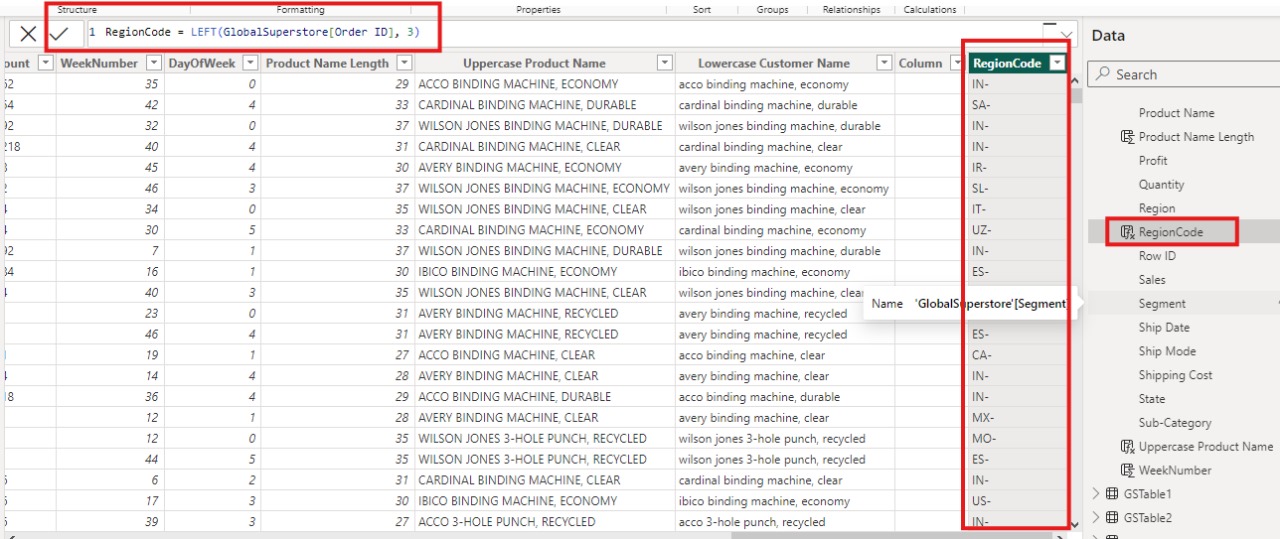
Extracting Text Made Easy: Understanding the LEFT Function in Power BI
Aug 09, 2024
Extracting Text Made Easy:
Understanding the LEFT Function in Power BI
In today's post, I will explain how to effectively use
the LEFT function in Power BI, a powerful tool for extracting specific portions
of text from your data. Whether you’re dealing with product codes, names, or
date formats, understanding how to leverage the LEFT function can significantly
enhance your data manipulation capabilities. Let's dive into its syntax,
practical applications, and common use cases to help you master this essential
function in your Power BI projects.
In Power BI, text functions are invaluable when it comes
to data manipulation and extraction. One such function is the LEFT function, which allows you to extract a
specific number of characters from the beginning of a text string. In this
blog, I will explain how to use the LEFT function effectively, its syntax, and
practical examples to help you master this function in your Power BI projects.
What is the LEFT Function?
The LEFT function in Power BI returns the first
character or characters of a text string, based on the number of characters
specified. This is particularly useful when you need to extract certain
portions of text, such as prefixes, codes, or initials, from a dataset.
Syntax of the LEFT Function
The syntax for the LEFT function is straightforward:

- text:
The text string from which you want to extract characters.
- num_chars: The
number of characters you want to extract from the start of the text
string. If this argument is omitted, the function will return the first
character by default.
Practical Examples of the LEFT
Function
Let’s look at some examples of how you can apply the
LEFT function in your Power BI reports.
Example 1: Extracting the
First Three Letters of a Product Code
Suppose you have a dataset containing product codes like
"PROD1234", "ITEM5678", and "CODE9101". You want
to extract the first three letters of each code to categorize them.
ProductPrefix = LEFT([ProductCode], 3)
This formula will extract "PRO",
"ITE", and "COD" from the respective product codes.
Example 2: Extracting Initials
from Full Names
If you have a list of full names, such as "John
Doe" and "Jane Smith", and you need to extract just the first
letter of the first name, you can use the LEFT function.
FirstNameInitial = LEFT([FullName], 1)
This will return "J" for both "John"
and "Jane".
Example 3: Working with Date
Formats
Let's say you have a date column in the format
"YYYYMMDD", such as "20240808". You want to extract the
year from this format.
YearExtracted = LEFT([Date], 4)
This will extract "2024" from the date string.
Use Cases for the LEFT
Function in Power BI
The LEFT function can be applied in numerous scenarios:
- Cleaning Data: Extracting
specific portions of text, such as area codes from phone numbers or
prefixes from product IDs.
- Categorization: Creating
new columns that categorize data based on the first few characters of a
string.
- Data Transformation: Preparing
data for further analysis by extracting relevant text portions.
Illustrative
Example of LEFT Function 
Conclusion
The LEFT function is a simple yet powerful tool in Power
BI for text manipulation. By mastering this function, you can streamline your
data preparation process and enhance your reports' accuracy and readability.
Whether you're cleaning data, categorizing information, or extracting relevant
text, the LEFT function is an essential part of your Power BI toolkit.
For more detailed guidance and in-depth training, visit our training here.

